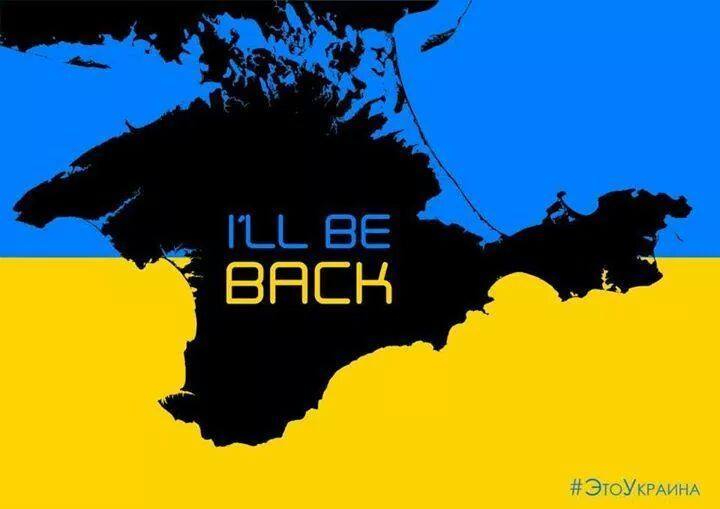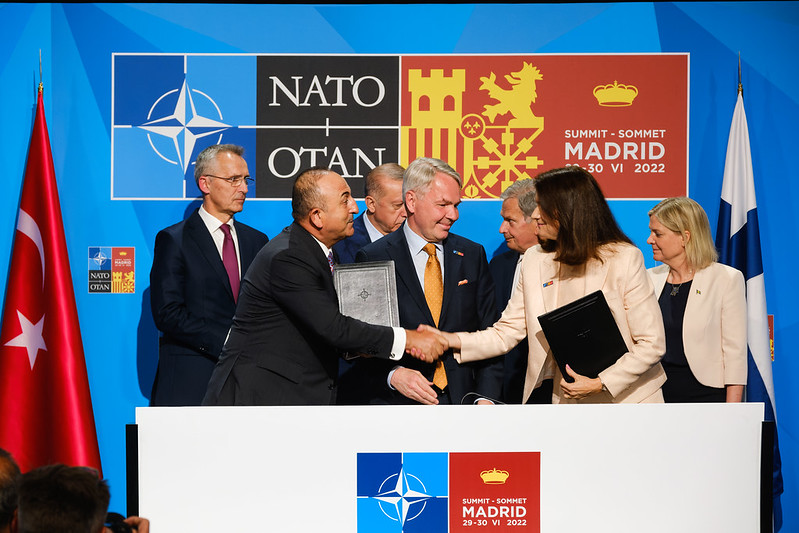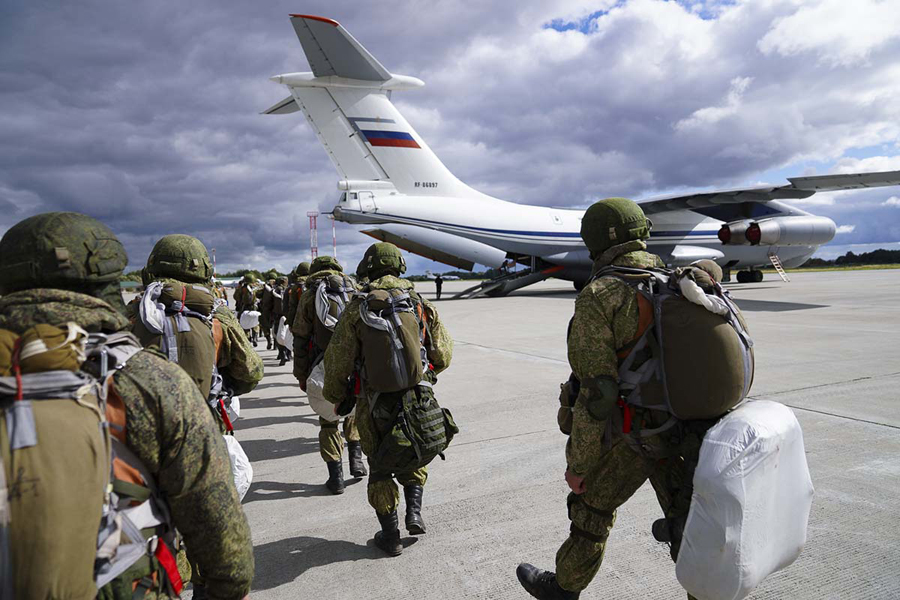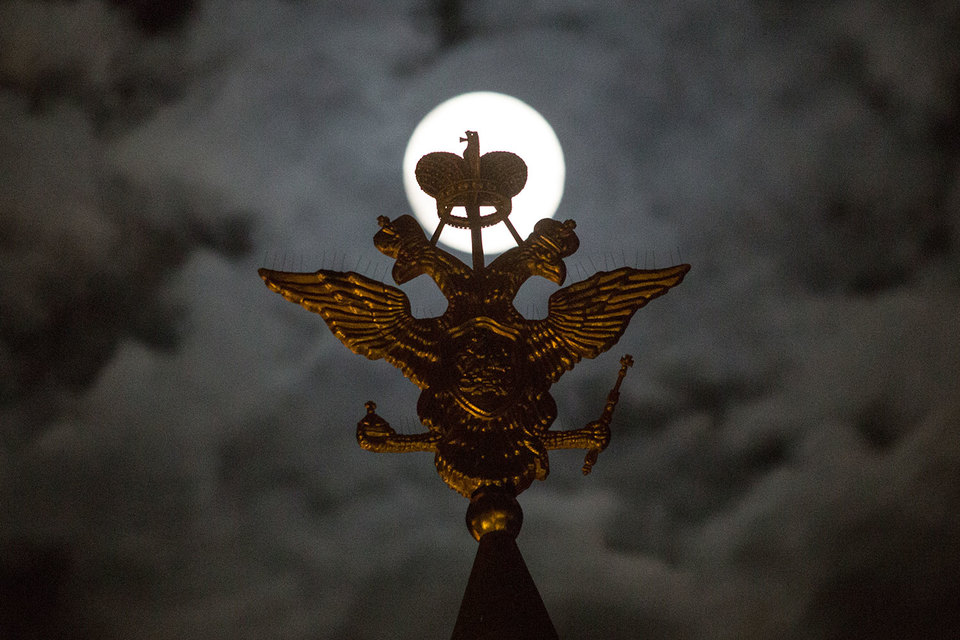A year ago, US Secretary of State Michael Pompeo issued its Crimea Declaration which referred to the Welles Declaration in 1940 regarding the Soviet occupation of the Baltic states and reaffirmed “the bedrock international principle shared by democratic states that no country can change the borders of another by force.”
The Declaration specified that the United States “rejects Russia’s attempted annexation of Crimea and pledges to maintain this policy under Ukraine’s territorial integrity is restored” and underscored that “through its actions, Russia has acted in a manner unworthy of a great nation and has chosen to isolate itself from the international community.”
In discussing this at a hearing of the US Senate’s Committee on Foreign Relations, Secretary Pompeo said “there will be “no relief” from sanctions imposed by the United States after the attempted annexation “until Russia returns control of the Crimean Peninsula to Ukraine,” a position that if maintained would be far tougher than Baltic non-recognition policy.
But precisely because it is tougher, it is entirely possible that it will be harder to sustain, both because there will be pressure to end the sanctions for other reasons that some will insist are more important than this principle and because the new policy lacks, for understandable reasons, many of the features of its Baltic predecessor.
Consequently, it is important on this first anniversary of the US Crimea Declaration to welcome this restatement of a principle but also to express concern that it lacks many of the features of US non-recognition policy regarding the Baltic countries and indeed contains loopholes that Moscow might exploit.
In March 2019, Gerald Connolly, a Democrat on the US House of Representatives Foreign Affairs Committee, introduced an amendment that would give more content to the Crimea Declaration and make American non-recognition of Russian aggression there more similar to US non-recognition of the Soviet occupation of Estonia, Latvia and Lithuania.
The author of these lines and many others have pressed for such a measure since shortly after Putin’s Anschluss (Crimea: A New 9/11 for the United States
, The West Needs a Non-Recognition Policy for Crimea Now, and West Must Adopt a Serious Non-Recognition Policy on Crimea, Mejlis Leader Says).
Consequently, we can only welcome this development, even though the resolution has not yet been passed. But it is critically important that everyone understands both what this latest legal initiative will mean and what is positive and negative implications may be for Ukraine, Crimea, and the future of US-Russian relations.
The core text of the Connolly proposal says that “It is the policy of the United States not to recognize the Russian Federation’s claims of sovereignty over Crimea, its airspace, or its territorial waters.” And it requires that “no Federal department or agency may take any action or extend any assistance that implies recognition of the Russian Federation’s claim of sovereignty over Crimea, its airspace, or its territorial waters.”
This is, of course, a proposal and has not been approved even in committee, let alone by the House of Representatives or the Senate. Moreover, the amendment contains the standard national security waiver that the President “may wave” the provisions of the law “on a case-by-case basis if the President determines that it is vital to the national security interests of the United States to do so.”
That is troubling, but more significant perhaps are two things this language does not include:
- On the one hand, it does not specify that Crimea is part of Ukraine and that Ukrainian sovereignty over it must be restored if the reasons for the act are to be vitiated;
- And on the other, it does not specify exactly what measures anyone in the government might take that would “imply recognition” of Russia’s asserted claim.
The first gap could allow the possible creation of a Russian client state in Crimea, separate from the Russian Federation but not part of Ukraine either, the kind of “unrecognized” entity that Moscow has sought to promote elsewhere on the former Soviet space to weaken its neighbors.
And the second allows government agencies on their own to determine what they will have to do to meet the requirements of the act. Some are obvious, such as a near certain ban on showing Crimea as part of Russia on US government-issued maps, but others on investment, especially if US firms use foreign daughter entities to do so.
How a more fully elaborated US non-recognition policy with regard to Russian claims about the annexation of Crimea might work can best be seen by an examination of past American policies on border changes and of its non-recognition policy regarding the occupation of Estonia
Since at least 1932, it will be recalled, the United States has maintained as a matter of principle that it will not recognize changes in international borders achieved by the use of force unless or until they are sanctioned international agreement. That doctrine was enunciated by Henry L. Stimson, the US secretary of state at the time, in response to Japan’s seizure of China’s Manchuria province and subsequent creation of the puppet state of Manchukuo.
The most forceful expression of the Stimson Doctrine was US non-recognition policy regarding the Soviet seizure of Estonia, Latvia, and Lithuania in 1940 under the terms of the secret protocols of the Molotov-Ribbentrop Pact between Hitler and Stalin.
On July 23, 1940, US Undersecretary of State Sumner Wells
declared that the Baltic countries had been “deliberately annihilated by one of their more powerful neighbors” and that the US would continue to stand by its principle in their defense “because of the conviction of the American people that unless the doctrine in which these principles are inherent once again governs the relations between nations, the rule of reason, of justice and of law – in other words, the basis of modern civilization itself – cannot be preserved.”
That declaration was given content by a policy that the United States followed until 1991 when Estonia, Latvia and Lithuania escaped from Soviet occupation and recovered their de facto independence, a policy that included the maintenance of ties with the diplomatic representatives of the pre-1940 Baltic governments, a ban on the production of any map by the US government showing the Baltic states as legitimately part of the USSR, and restrictions on travel to them by senior US officials.
At the same time, it is important to remember what such policies did not mean. Neither the Stimson Doctrine nor Baltic Non-Recognition Policy called for American military action to liberate occupied territories, although both provided enormous encouragement to the peoples of these occupied areas that they would at some point once again be free and thus reflected the principles and values of the American people.
Nor did the American non-recognition policy prevent Washington from cooperating with Moscow on other issues. Indeed, this policy remained in place even as relations between the US and the USSR warmed and cooled, and official expression of this policy waxed and waned along with that.
There is no question that US non-recognition policy played a key role in the recovery of the de facto independence of Estonia, Latvia and Lithuania in 1991. But the policy by itself was neither the magic bullet that achieved that on its own or a serious constraint on what Washington wanted to do with Moscow.
That track record in fact raises two important questions that many may not want to ask:
- On the one hand, other than maps and investments, what can the US actually do to give content to a non-recognition policy given that Crimea, unlike Estonia, Latvia and Lithuania, is not a state on its own? The last year has not provided an answer.
- And on the other, could a US non-recognition policy, however important as a restatement of American principles, be at some point used as a justification for softening or even eliminating the sanctions regime against Moscow over Crimea that the US and other Western governments have pledged to maintain until Moscow withdraws?
That is unlikely, but even the risk is an important sign that as welcome as this move is for all those who care about Crimea, Ukraine and international law, it is not a panacea. The struggle must continue. One can only hope that once adopted, such an American law will inspire those committed to this fight to remain so.
One year after the promulgation of the Crimean Declaration, US policy regarding Russia’s forcible annexation of the Ukrainian peninsula is both tougher than its Baltic predecessor given the sanctions regime and weaker because it lacks many of the specific features that made the maintenance of that policy for 50 years possible.
That is something the Crimean Tatars understand all too well – see Eskender Bariiev’s analysis. It is something everyone else concerned needs to keep in mind as well.
Read More:
- Five years after Anschluss, US moves toward a formal non-recognition policy on Crimea
- Letter of Ambassador of Ukraine to the USA O.Motsyk to the US Congress (2014)
- US non-recognition policy and Crimea – Russian misrepresentations and Baltic truths
- ‘In the interests of national security, US sanctions against Russia may be lifted’





